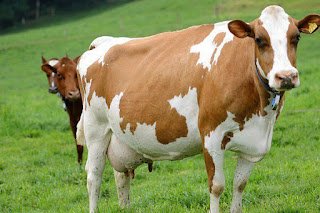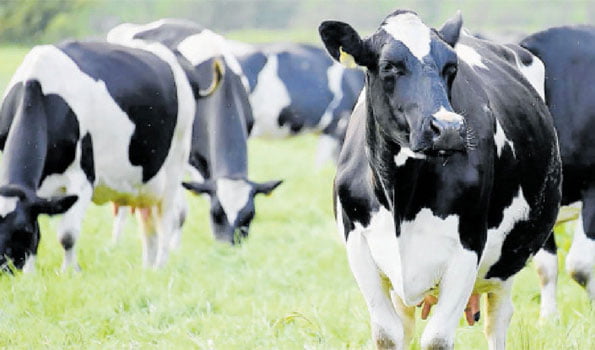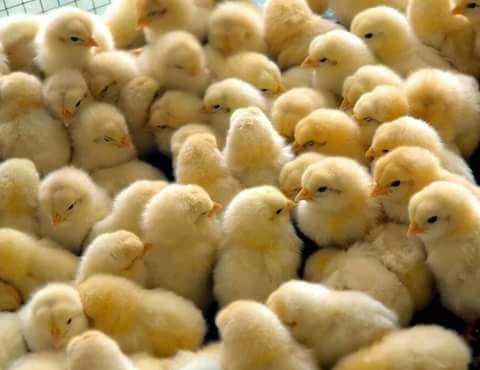Milk production is a very good and interesting business that has many benefits and makes the farmer satisfied especially for the one who likes this work. However, it is necessary to start by laying a solid foundation even before thinking about which type you will take for breeding. It is good to know that management is one of the most important things that if neglected can even change a dairy cow to have poor production like a local cow.
Different types of dairy cows have different needs, so the level of your preparation is very important. You need to understand that, you have to meet your needs for nutrition, not only in the initial needs but also in the future needs of your cows.
This issue has made many breeders unable to continue due to the fact that they engage in this activity without looking at the basic things required as well as making solid plans. Even though all the requirements for nutrition and other things are the same, dairy cows must produce according to their constitution and their full potential.
If you are going to be able to afford to raise real dairy cows, you must also realize that high milk production also requires high quality management.
For that reason, it is better to raise a normal level cow (preferably hybrid) that will be compatible with your ability to take care of it.
Two types of dairy cows that have the ability to produce a lot of milk;
1. Friesian

The friesian type of cow is easy to recognize due to
its black and white color, and
it is a cow with the best milk production.
These animals are large and can also have white and black or red and white patches. If well-fed, a mature freshian can weigh up to 550 kilograms and stand 150 centimeters at the shoulder.
The calf can be planted, at the age of five months while weighing 360 kilograms. While some cows have the ability to live for a long time, the average life expectancy of a Friesian is six years. However, this type of cow is a good milk producer that can produce 7800 kilograms on average for 360 days with a low fat content compared to other types of cattle. In addition, this type of cattle requires a lot of feeding, so it is recommended for breeders who are sure to have good and sufficient nutrition for the whole year.
2. Ayrshire

This type of cow has brown and white squares, almost the same as other types of cattle that tend to have a (Mahogany) color.
These cows have a normal average, with a weight of 540 kilograms at maturity.
In addition, it can afford any type of breeding and it is not easy to get any foot problems.
Ayrshire can do well in any type of pasture unlike other types of dairy cattle.
With good management and good feeding, average milk production is 5400 kg with higher fat content compared to Friesian.
Aryshire is a good breed for breeding, especially due to its strength and high milk production.
Cows of this type are recognized for having a good shape and their teats seem to be of high quality.
In addition, the composition of its milk has made its milk seem very good in the production of butter and cheese. Ayrshire milk is known as “the best milk to drink” due to its ability to contain enough fat and a large amount of protein. For a beginner breeder, this type of cow is very good to start with and later add fresian after your ability to serve is strong. Native breeds are very expensive and hard to find, so the easiest way for beginning dairy farmers is to find the best common cows, which are often hybrids, and then improve them using the method of transplanting a high-yielding male. . And this requires adequate education about male selection. *Important: When buying cattle for breeding, it is good for the breeder to realize that,
Dairy farmers often do not sell their productive cows, They sell those who do not reproduce at a good level, those with problems such as not conceiving, those with heat problems and those who are attacked by diseases from time to time. In that sense, along with the type of cow you need to buy, it is very important to be careful not to buy a cow with any problem because that is when the beginning of your production becomes problematic and you do not reach your goal. A shed and space for dairy cows Before the breeder thinks about housing for his cattle, it is very good to ask yourself how much livestock you will need to have after several years, thus allowing you to allocate enough space for the livestock you will bring. The easiest way to realize that, is to ask yourself how many livestock you would like to have in the future and what level of milk production you would expect to reach from your cow. The first question, it is very important for the breeder to ask himself, because the level of livestock is based on the ability of the level of nutrition that will be required to feed regularly. Usually, one acre of land is enough to feed only one Freshiani or two Jesrey dairy cows. One dairy cow (Fresian, Guernsey, Jersey) as much as 5 tons of forage of green leaves or dry leaves per year. This is equivalent to 25,000 kilograms of reeds or the amount of leaves you have grown on one acre. Even with good forage management, or a mixture of forages like legumes or plants like desmodium, it is obvious that you will still need to have at least 0.75 acres of extra area to feed your cattle well. In general, dairy cows need more nutrition than beef cows, and often have higher production where the quality of the nutrition is high. Likewise, if you are going to produce your own feed, you will still need an additional source of nutrition in case of a problem with the feed. This table shows the amount of nutrition required for different types of dairy cows, as well as land for pasture production. Domestic breeding In domestic breeding, cows need to be kept in a clean environment, and their housing should be adequately protected and provide them with freedom. Most breeders have been investing a lot of money in building livestock, and in the end it ends. lack of money to feed the livestock. A beginner breeder is advised to build his livestock a good and affordable housing and later develop the stables from the income obtained.
Things to consider in the construction of sheds Space:
A large cow needs to have enough space for food,
rest and exercise, something that most breeders do not consider and instead keep their livestock in a small space which ultimately depresses the animal’s growth and production in general.
With that logic, one large cow needs 8 square meters away from its resting area. The easiest way is to isolate this area in front of the stable.
Remember, the more space you have, the more productive you are.
Roof: It is good to have a roof to protect livestock from wind, rain and hot sun. Make sure the roof is high, to give freedom to your animals to walk inside the shed without any problem. Make sure the slope of the roof does not affect the part of the animals to rest and the feeding part, especially by allowing water to enter those parts.
Flooring: Make sure the floor has a good drainage system to allow water and urine to pass, thus keeping the animals in good condition. You can make a cement floor that is easy to clean. However, since it costs money, a beginner breeder can use clay or another type of hard soil to make a floor. If you are going to floor the shed, the floor should not be slippery because cows can slip and get hurt. The floor should be slightly steep and the slope should be straight part of the flow of urine and excrement.
Bedding: The area where animals rest, it is good to have bedding. You can use any dry raw material that can absorb urine and manure. The bedding must be changed regularly. Water and food containers: Make sure there are enough containers for food and water. The huts are better located near the sources of access to clean and safe water. On average, one cow needs to drink between 50 and 80 liters of water per day, equivalent to 5 to 8 buckets of water (of 10 liters).
Manure pit: Well-fed animals produce a lot of manure, so it can be a problem for people around you, especially if it spreads everywhere and causes a bad smell. If you raise a lot of animals in a small area without having a special place to put manure from those animals, then it is obvious that you will cause misunderstanding with the neighbors, but it will also cause the animals to stay in a state of discomfort.
It is better to prepare a special pit for manure, especially for domestic breeding, before using it for putting on pasture fields. How to start farming easily Before deciding to start a milk production business, good preparation is one of the reasons that will give you the light to succeed or not. Even before thinking about what kind of cow you will buy, you must first think about what you will feed the cow.
Think forage, think grass To raise cattle, you must have enough nutrition. You can’t keep a cow producing when it doesn’t have enough good nutrition, including grass, legumes and cereal leaves.
One of the best ways to focus is grass. A beginner breeder, must consider these for nutrition;
• Make sure you maintain the native grasses in your pasture
• Increase by growing other new leaves in your garden
• Buy pasture where you can feed your livestock
• Rent or buy an area for growing pastures and then cut and send to feed livestock
• Buy leaves from people who have pastures or who sell ready-cut leaves.





